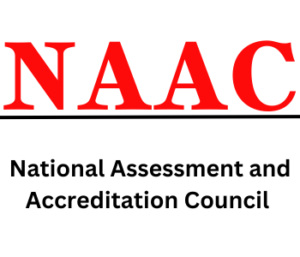Introduction
The National Assessment and Accreditation Council (NAAC) is an autonomous body tasked with evaluating and accrediting higher education institutions in India. NAAC plays a crucial role in promoting quality assurance and continuous improvement in the higher education sector. In this post, we will delve into the NAAC criteria and evaluation process, shedding light on the key aspects and frequently asked questions (FAQs) to provide a comprehensive understanding.
Understanding NAAC Accreditation
NAAC accreditation serves as a quality assurance mechanism for higher education institutions in India. It involves a rigorous evaluation process to assess an institution’s performance across various criteria. The accreditation outcome is expressed through grades ranging from A++ to C.
Key Criteria for NAAC Evaluation
Curricular Aspects
The curricular aspects focus on the institution’s academic programs, including the relevance, flexibility, and innovation in the curriculum design.

Teaching-Learning and Evaluation
This criterion assesses the effectiveness of the institution’s teaching methods, use of technology, and evaluation practices.
Research, Consultancy, and Extension
NAAC evaluates the institution’s research activities, involvement in consultancy projects, and engagement in extension activities.
Infrastructure and Learning Resources
The evaluation includes an assessment of the institution’s physical infrastructure, library resources, and IT facilities.
Student Support and Progression
This criterion examines the institution’s efforts in supporting students’ academic and personal development, as well as their progression and employability.
Governance, Leadership, and Management
NAAC assesses the institution’s administrative effectiveness, leadership, and decision-making processes.
Innovations and Best Practices
Innovations and best practices that enhance the quality of education and institutional functioning are considered during the evaluation.
NAAC Evaluation Process
Self-Study Report (SSR)
Before the evaluation, the institution prepares an SSR, providing comprehensive information about its academic, administrative, and extracurricular activities.
Peer Team Visit
A team of experts conducts an on-site visit to assess the institution based on the SSR and interactions with stakeholders.
Accreditation Outcome
Based on the peer team’s report and the SSR, NAAC determines the accreditation outcome, and the institution is awarded an appropriate grade.
FAQs on NAAC Criteria and Evaluation
FAQ 1: What is the significance of NAAC accreditation for institutions?
NAAC accreditation enhances an institution’s reputation, credibility, and quality of education, facilitating collaboration and funding opportunities.
FAQ 2: How are NAAC criteria designed to assess institutions?
NAAC criteria are meticulously crafted to evaluate an institution’s overall performance, covering diverse aspects of education and governance.
FAQ 3: Can institutions choose the accreditation grade they seek?
Yes, institutions can aim for specific accreditation grades based on their performance and meeting the respective criteria.
FAQ 4: What are the parameters under the curricular aspects?
The curricular aspects encompass program objectives, course content, teaching methods, and student feedback, among others.
FAQ 5: How is the teaching-learning process evaluated by NAAC?
NAAC evaluates the institution’s teaching methods, use of technology, faculty-student interactions, and feedback mechanisms.
FAQ 6: What constitutes the research and extension evaluation?
Research productivity, publications, patents, consultancy projects, and extension activities are considered in this evaluation.
FAQ 7: How does NAAC assess infrastructure and learning resources?
NAAC assesses the adequacy, accessibility, and utilization of infrastructure and learning resources, including library facilities and IT support.
FAQ 8: What aspects are considered under student support and progression?
NAAC evaluates student support systems, counseling services, academic progression, and placement opportunities.
FAQ 9: How does NAAC evaluate governance and leadership?
The evaluation includes examining the effectiveness of the institution’s governing bodies, leadership decisions, and strategic planning.
FAQ 10: What role do innovations and best practices play in the evaluation?
Innovations and best practices demonstrate an institution’s commitment to excellence and its ability to adapt to changing needs.
FAQ 11: How is the SSR prepared, and what does it contain?
The SSR is prepared by the institution, containing comprehensive information about its infrastructure, programs, faculty, and achievements.
FAQ 12: What happens during the peer team visit?
The peer team conducts an on-site assessment, interacts with stakeholders, and verifies the information provided in the SSR.
FAQ 13: How is the accreditation outcome determined?
The accreditation outcome is based on the peer team’s assessment, SSR, and compliance with the NAAC criteria.
Conclusion
NAAC accreditation is a transformative process that empowers institutions to strive for excellence and continuous improvement. By understanding the NAAC criteria and evaluation process, institutions can proactively work towards meeting the established benchmarks and contributing positively to the growth of the Indian higher education landscape. The accreditation fosters a culture of quality and accountability, leading to a brighter future for higher education in India.
